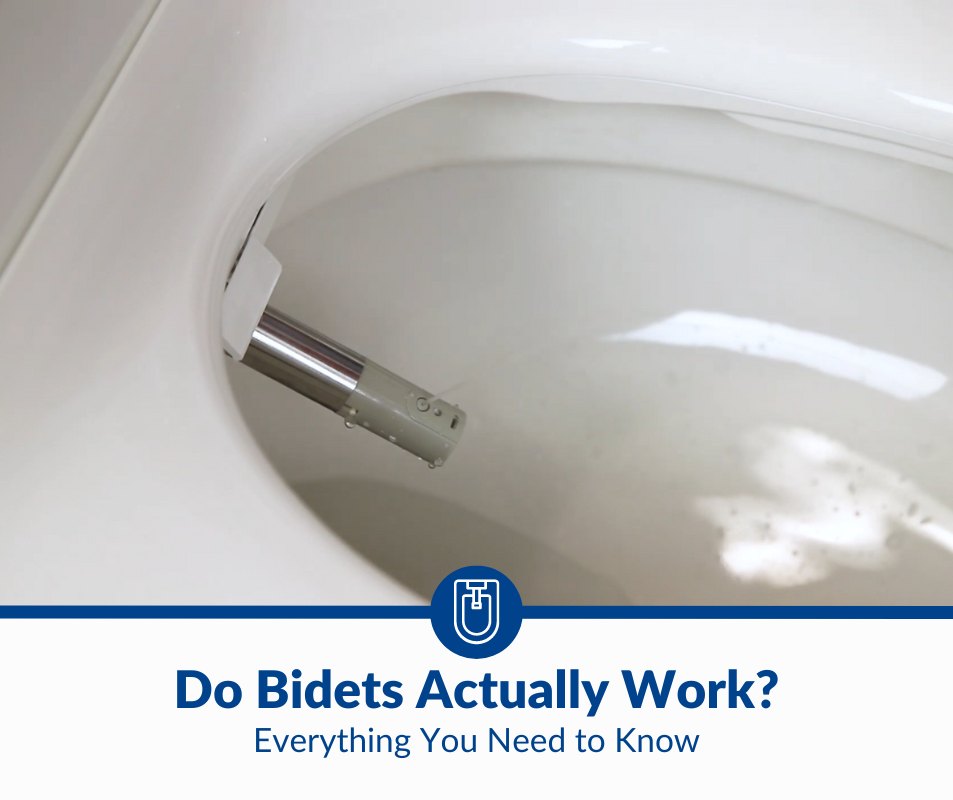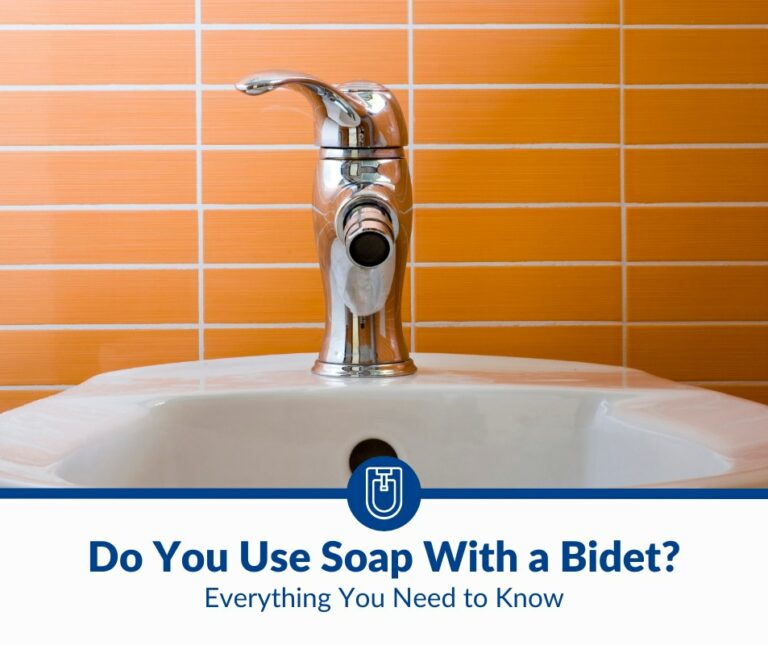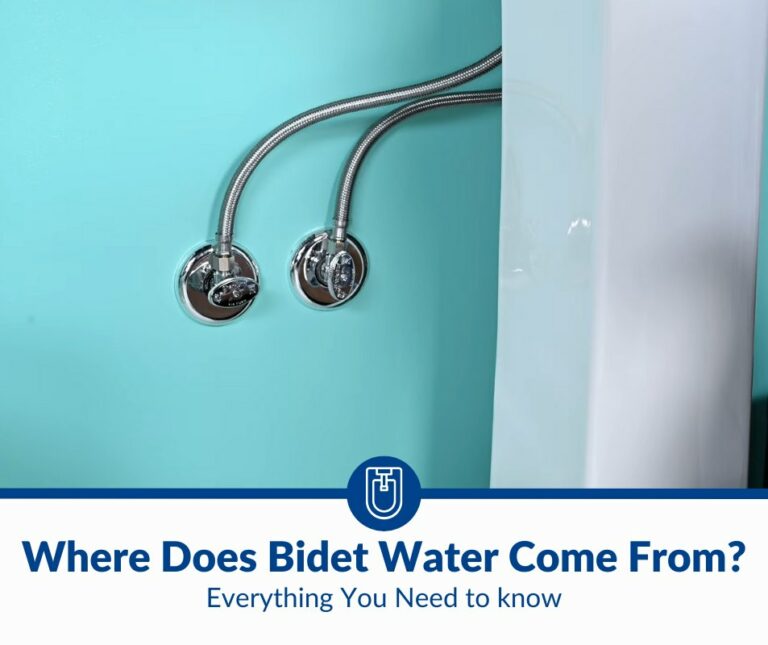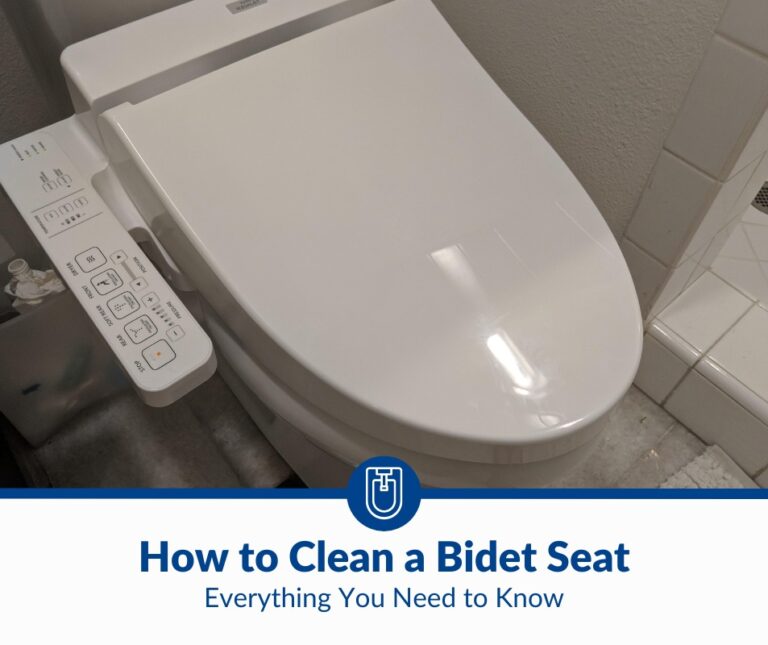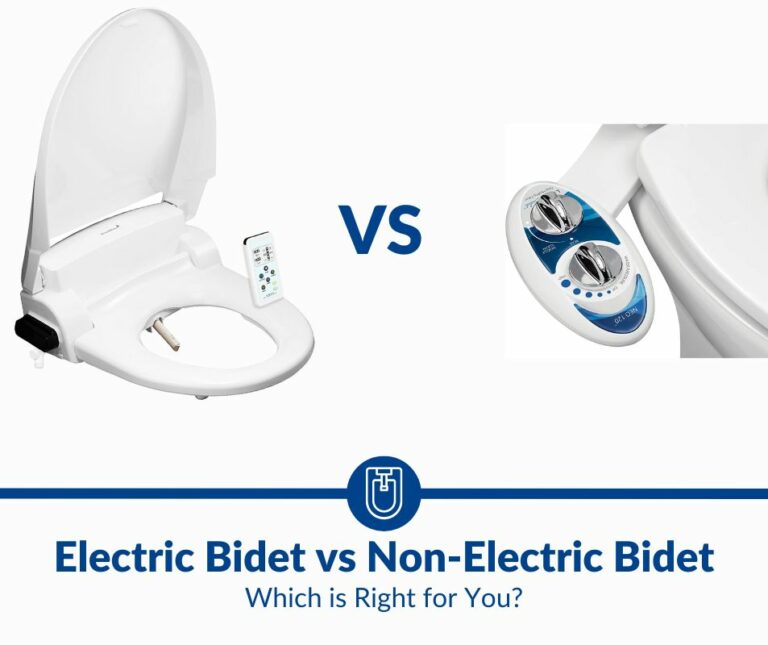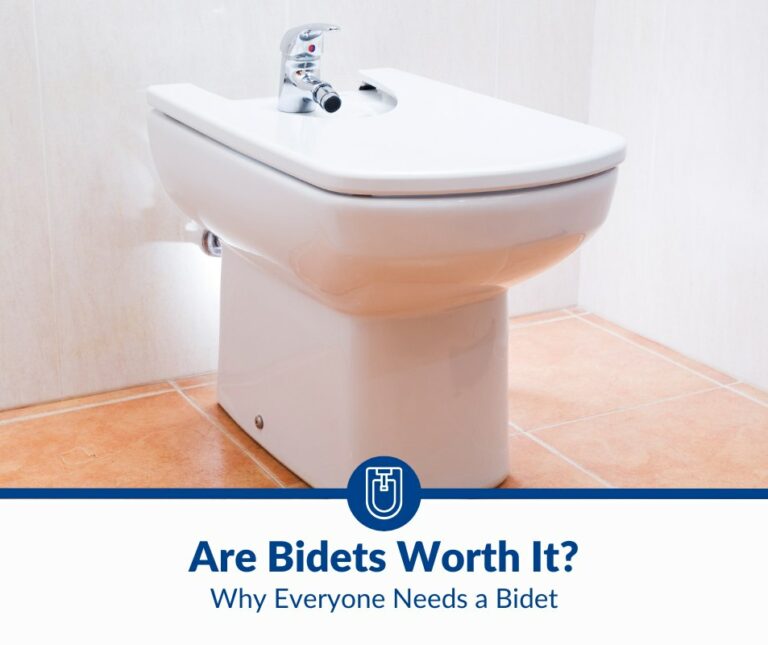Do Bidets Actually Work? An Honest Answer
Bidets have become increasingly popular around the world. Whether that popularity is a testament to how well bidets work merits further discussion.
Bidets work in the sense that they are generally more hygienic than toilet paper. They are also good for those who may have difficulty using regular toilets, like pregnant women and the elderly. If they are not used properly, however, they can do more harm than good.
The bad news is that the answer to the question of whether bidets actually work isn’t a simple “Yes” or “No.” The good news is you can judge for yourself by reading the pros and cons of bidets below.
6 Reasons Why Bidets Actually Work
Bidets are water-based cleansing systems designed to clean your nether regions after using the toilet. They’re common in many parts of the world, especially in Asia and Europe.
There are many reasons you should consider using a bidet. Here are 6 of the most important ones:
Bidets Are More Hygienic Than Toilet Paper
When it comes to hygiene, there are a lot of different opinions. Some people swear by toilet paper, while others prefer bidets. So, which is the better option?
As far as hygiene is concerned, bidets work better. Bidets shoot a stream of water up your bottom, cleaning off any feces or urine that may be there. The water is then flushed away, taking the feces and urine with it. This is a much more effective cleaning method than toilet paper, which can sometimes leave behind feces and urine.
Bidets also have the added benefit of preventing the spread of infection. When you use a bidet, you’re less likely to spread bacteria from your bottom to your hands or other people. This is because the water from the bidet will wash away any bacteria on your bottom.
Note: Most people choose to pat-dry with toilet paper after using a bidet, but this doesn’t spread as many germs since the area is washed. You can also choose to use a built-in air dryer if you want to avoid toilet paper altogether.
Bidets Can Relieve Discomfort From Excretory System Issues
There are many health benefits to using a bidet rather than traditional toilet paper. They relieve symptoms of conditions such as hemorrhoids, anal fissures, and constipation. Bidets clean the area with water, which is far more effective and less irritating than toilet paper.
According to Healthline, a 2011 study showed that low-to-medium water pressure from a bidet could help relieve symptoms of pain caused by hemorrhoids and anal fissures as much as warm baths. Some bidets include temperature adjustments, which can make a big difference for those suffering from bathroom discomfort.
Bidets Are Environmentally Friendly
The last few decades have seen a resurgence in the use of bidets, as toilets have become increasingly efficient and people have become more environmentally conscious.
In addition, Watters Plumbing claims bathroom tissue is a leading cause of clogged sewer systems. When wet tissue mixes with oil and grease, it can form huge clogs that are difficult and expensive to remove.
Bidets Are More Comfortable To Use
Not only can you avoid reaching back (which could be difficult for people with joint pain), but you also don’t have to worry about choosing the perfect kind of toilet paper. Toilet paper is either too soft or too abrasive, and bidets let you control the pressure without relying on trying to find better bathroom tissue.
Additionally, many bidets come with thermostats to adjust the temperature for both the water and the seat. You can also choose the water nozzle angle if you’re uncomfortable.
Bidets Are Easy to Install
Bidet attachments can be plumbed into the existing toilet’s water inlet. All you have to do is connect a T-fitting to the toilet’s hose, then connect the open portion to the bidet. The bidet attachment mounts under the seat, after which it’s ready to use.
If you choose a bidet seat, you can remove your existing toilet seat and mount the bidet seat in its place. Much like the aforementioned bidet attachment, you can plumb it directly into the toilet’s water inlet.
If you choose a traditional bidet, you can connect it to the existing toilet plumbing inlet and outlet. This is usually done by a professional to secure a warranty, but it’s typically done within an hour or so.
Bidets Are Good for Pregnant Women and the Elderly
Bidets are especially beneficial for pregnant women because they can avoid using toilet paper. This is important because pregnant women are at a higher risk of developing hemorrhoids. Toilet paper can also irritate the skin around the anus, which can lead to urinary tract infections (UTIs).
Bidets can also be helpful for the elderly. Since their skin is more fragile and susceptible to injury, a soft, gentle cleanser like a bidet is important.
Downsides of Using a Bidet
Although bidets have many advantages, they also come with a fair share of disadvantages, including:
Bidets Can Spread Infections if Not Used Correctly
If bidets aren’t cleaned frequently and thoroughly, they can potentially become a source of bacterial contamination. The National Library of Medicine explains that unsanitary, uncleaned bidets can cause an increase in harmful bacteria in the women’s genitals.
In addition, some bidets don’t have self-cleaning nozzles, which can also contribute to the spread of infections. This is especially the case when many people use the bidet. Public bidets typically don’t have self-cleaning nozzles, so it’s on the custodian to clean them.
Standalone Bidets Use a Lot of Bathroom Space
While standalone bidets can be very useful, they also take up much bathroom space. This is because they’re a separate unit that needs to be installed next to the toilet.
There are two types of standalone bidets:
- Floor-mounted: The floor-mounted bidet tends to be larger and take up more space. However, they’re easier to install because they don’t require wall-mounting brackets and additional support structures.
- Wall-mounted bidets: Wall-mounted bidets are more compact than floor-mounted ones. Their only true downside is they take a little bit longer to install.
Therefore, if you have a small bathroom and prefer a standalone bidet, a wall-mounted bidet might be the best option.
Bidets Require a Learning Curve To Get Used to Them
The initial discomfort and learning curve associated with bidets is one of the main reasons they have yet to catch on in countries like the United States.
This can be attributed to the fact that bidets aren’t part of America’s cultural tradition. Americans are used to cleaning after themselves with toilet paper. It takes time and effort to break out of the cultural conditioning and learn to use a bidet.
Some Bidets Are Expensive
The initial installation cost of a bidet can be daunting. For example, if you want to use a standalone bidet, you need to pay for the cost of the bidet itself plus the cost of installation by a professional plumber.
Other types of bidets, such as toilet seat bidets, come with deluxe features like heated seats and air dryers in addition to their standard functions. Your monthly energy expenses could end up significantly higher due to these.
Using Bidets Can Wet Your Clothes
Another potential downside of bidets is they can wet your clothes if you’re not careful. Water can spray out of the bidet and over your clothing if the water pressure is too high.
To prevent this issue, make sure you set the water pressure to the right level. You should also ensure that you pull your pants below your knees or lift your skirt high enough to prevent any splashing water from soaking your clothes.
Modern Bidets Require Electricity To Operate
Modern bidets provide a variety of comforts, like water temperature, pressure regulation, and warm seats. However, this comes at a higher cost as they require a connection to an electrical outlet, which means you can’t use them if there’s a power outage.
How Different Types of Bidets Work
Bidets work by spraying water through a nozzle, but there are many types of bidets to choose from. Depending on the bidet you select, your installation time will range from five minutes or less to one hour or so. Furthermore, portable bidets don’t require any installation, so you can carry them with you wherever you go.
Here’s how each type of bidet works:
- Standalone bidets: Standalone bidets are the traditional style. They’re not connected to the toilet, though some standalone bidets share the same plumbing. These bidets work by dispensing water from a removable nozzle that flushes debris away after you use the toilet. You have to stand up and move from the toilet to the bidet, though.
- Portable bidets: Portable bidets are great because you can use them wherever you go, even if the bathroom doesn’t have a bidet. These bidets are compact water bottles with nozzles at the end. You can fill the water bottle at the sink before using the toilet. Point the nozzle at the debris, then squeeze the bottle to activate the bidet.
- Bidet attachments: Bidet attachments work by mounting under the lid and seat but above the bowl. The nozzle sits in the bowl right under the rim. You can adjust the water pressure, then press a button that activates the bidet. Many bidet attachments have self-cleaning nozzles with buttons right next to the sprayer button.
- Bidet seats: Bidet seats work by replacing the entire toilet seat and lid assembly. Much like bidet attachments, the nozzle sits under the rim and sprays upward. Many people choose bidet seats because they don’t have to worry about finding a bidet attachment compatible with the toilet’s components.
As you can see, there are plenty of bidets to consider before knowing which one is right for you. However, every bidet has similar requirements, including cleaning the nozzle weekly (and self-cleaning the nozzle after each use if applicable), ensuring there aren’t any leaks, and maintaining a healthy water supply.
How To Choose the Best Bidet for You
To choose the best bidet for you, consider how much room you have in your bathroom and what amenities you want to use. You can also think about your current water hookups, your toilet’s condition, and whether you want to install the bidet yourself.
So, how do you know which type of bidet is best for you?
- Bidet seats are best for people who want thermostats, adjustable seat heights, and other amenities. They often have more room for amenities, not to mention the fact that you can heat the seat. Regular toilet seats can’t connect to bidet thermostats, so you’ll have to deal with cold seats, water, etc.
- Bidet attachments are ideal for quick installations and easy usage. You can install a bidet attachment in five to 30 minutes, depending on the make and model. They have small panels on the side that lets you adjust everything before or after you use the bidet. Start on the lowest setting, then increase the water pressure as needed.
- Portable bidets are great for anyone who wants to improve their bathroom hygiene wherever they go. Whether you own a bidet at home, you can use a bidet at hotels, other peoples’ houses, and more. Using a portable bidet will also prevent you from coming in contact with germs on public toilet paper rolls.
- Standalone bidets are best for people who have a lot of space in their bathroom and don’t want to alter their existing toilet. While bidet attachments don’t interfere with a toilet too much, it’s understandable some people don’t want to make any modifications. Standalone bidets also look better to some homeowners.
The SAMODRA Bidet Attachment (available on Amazon.com) mounts under the toilet seat and lid. It comes with an adjustable knob, a self-cleaning button, a back-cleaning button, and a front-cleaning button. This bidet also includes all of the fittings you need to connect it to your toilet, so there’s no need to head to the hardware store.
Once you choose your bidet, it’s time to learn how to use it properly. After all, using a bidet incorrectly can prevent you from cleaning everything, but it can also cause long-term sanitation issues every time you use the bathroom.
Read on for a handful of helpful bidet tips for beginners.
Tips for Using a Bidet Properly
Tips for using a bidet properly include aiming the nozzle directly at your anus or genitals, setting the desired water pressure, and running the water for at least 20 to 30 seconds. Additional suggestions for correct bidet usage include cleaning the nozzle regularly and drying off with a piece of toilet paper or an air dryer.
Let’s break each of these suggestions down below.
- Aim the nozzle before using the bidet. If your bidet doesn’t have an adjustable nozzle direction, you only have to aim it when you install it. The water pressure will determine the angle. Your bidet should face towards the center of the toilet bowl (or wherever you sit) to ensure you’re completely clean after using it.
- Check the water pressure. The water pressure makes a big difference. I recommend keeping it at the lowest setting until you use it for the first time. Some people require more pressure than others. If the pressure is too high, it’ll hurt. If it’s too low, you won’t clean enough of the debris, so you’ll have to use more toilet paper when you’re done.
- Don’t use the bidet for too long (or not long enough). Using a bidet for several minutes in a row can cause discomfort, especially if you have it at a higher setting. If you don’t use it long enough, you won’t get rid of the feces, which causes bacterial growth, odors, and more. Most people have to use a bidet a couple of times to know their time requirements.
- Clean and maintain the bidet to prevent bacterial growth. Use the self-cleaning mechanism for 10 to 15 seconds after each time you use the bidet (if your bidet has one). Also, clean the bidet every week with an all-purpose cleaner or a toilet-cleaner to remove debris buildup.
- You still have to dry off after using a bidet. Some bidets use air dryers, while others require that you dab with toilet paper to eliminate the excess moisture left behind.
Note: If you want to use an air dryer, you’ll have to choose a bidet seat or a standalone bidet with electrical hookups. Many bidets work with water pressure, while others require electrical connections to power the thermostat, air dryer, nozzle direction, pressure, and more. Look for electric-powered bidets when you shop for your new setup.
Conclusion
Overall, bidets appear to have many benefits over traditional toilet paper methods. They’re more hygienic, can help save money and resources, and can be more gentle on the skin.
However, it’s important to do your research to find a bidet that will work for your needs. It’s also important that you know how to care for your bidet, so that regardless of what you choose, it will last for as long as you need it to.

